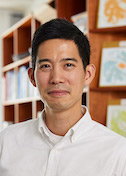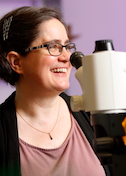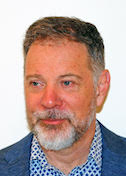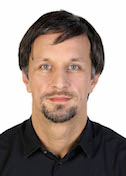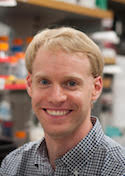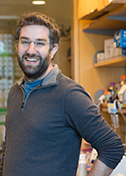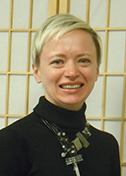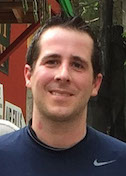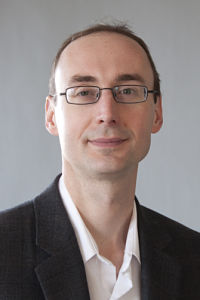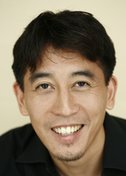Surprise, Surprise
Catherine Drennan
Massachusetts Institute of Technology
Published April 26, 2014
After studying chemistry at Vassar College, Catherine Drennan took a leap from her native New York to a Quaker-run farm school in Iowa. Being the high school’s only science teacher, she taught physics, chemistry, and biology, which included monitoring pregnant hogs and assisting them through labor. "I call it real biology," she says. "At one time, I could tell you all of the signs that a hog was going into labor."
For chemistry, however, that sense of real — the ways in which chemistry could solve problems in the world — wasn’t clear. So Drennan decided to go back to school herself, with a plan to return a few years later an improved high school teacher. "I’ve gotten a little bit side-tracked," she says, now a professor of chemistry and biology at MIT.
While Drennan had done some crystallography under Miriam Rossi at Vassar, she didn’t have it in mind for graduate school. Rather, she rediscovered it. As students explained their research to her during interviews, she found herself repeatedly asking one question: "But what does it look like?"
"For me, structure was the beginning of understanding," says Drennan, who chose to attend the University of Michigan and to work in the research lab of Martha Ludwig, a crystallography pioneer. "Often a good structure makes you realize you don’t understand anything anymore."
This unhinging of understanding occurred with her first structure, that of vitamin B12 in complex with a protein. At the time, researchers speculated that a tail hanging from the vitamin’s cobalt-centered ring was key to the vitamin’s chemistry. However, Drennan’s structure, published in Science in 1994, showed that the vitamin had changed shape and the tail was not a part of the action. "It wasn’t what anyone expected,” she says. "This is the power of structure."
The project sold Drennan on crystallography. It also linked her to a chain of female scientists who were ground breakers in crystallography, all with ties to vitamin B12: Ludwig, Rossi, Jennifer Glusker, and the late Dorothy Hodgkin, the chain’s anchor, having solved the first structure of vitamin B12, for which she won the Nobel Prize in Chemistry in 1964. "I have a lot of really wonderful female role models in crystallography," says Drennan.
After a postdoc at Caltech in the lab of Doug Rees, Drennan landed a faculty position at MIT. Ever willing to take on difficult challenges, she took on the task of crystallizing and solving a class II ribonucleotide reductase (RNR), which plays a key role in DNA synthesis, in complex with vitamin B12. "Everyone I met had tried to crystallize it and not gotten it to work," says Drennan. "I didn’t have high expectations, but I was going to try anyway."
To her surprise, Drennan succeeded, crediting the victory to luck, circumstance (her lab was just getting started and had only one member, an enthusiastic undergraduate), and experience. "The fact that I had struggled to get things to work before gave me expertise that finally paid off," she says.
Today, Drennan runs one of just a few labs at MIT with crystallography at its core, so she finds SBGrid to be a welcoming community, especially for her students. Still actively interested in education, she also runs a class that asks her graduate students to slow down and look under the hood of the software programs they use, dissect their methods and critique interpretations. "I want to make sure people are getting as solid a foundation as they can," says Drennan.
Drennan has many projects under way in her lab, including continued efforts to understand RNR. Inhibiting RNR shuts down DNA synthesis and halts cell growth, making RNR inhibitors effective cancer drugs. Since the drugs knock out RNR in every cell, they are very toxic.
Yet Drennan and others believe RNR inhibitors might also be effective anti-bacterials or anti-virals if they specifically target the pathogen’s RNR, not the human form. So Drennan is working to differentiate bacterial class II RNR from human class I RNR. "Structure is a huge part of that," says Drennan, who uses crystallography as well as electron microscopy, small angle X-ray scattering, and even analytical ultracentrifugation in her lab. "It’s continuing to provide surprises."
-- Elizabeth Dougherty







